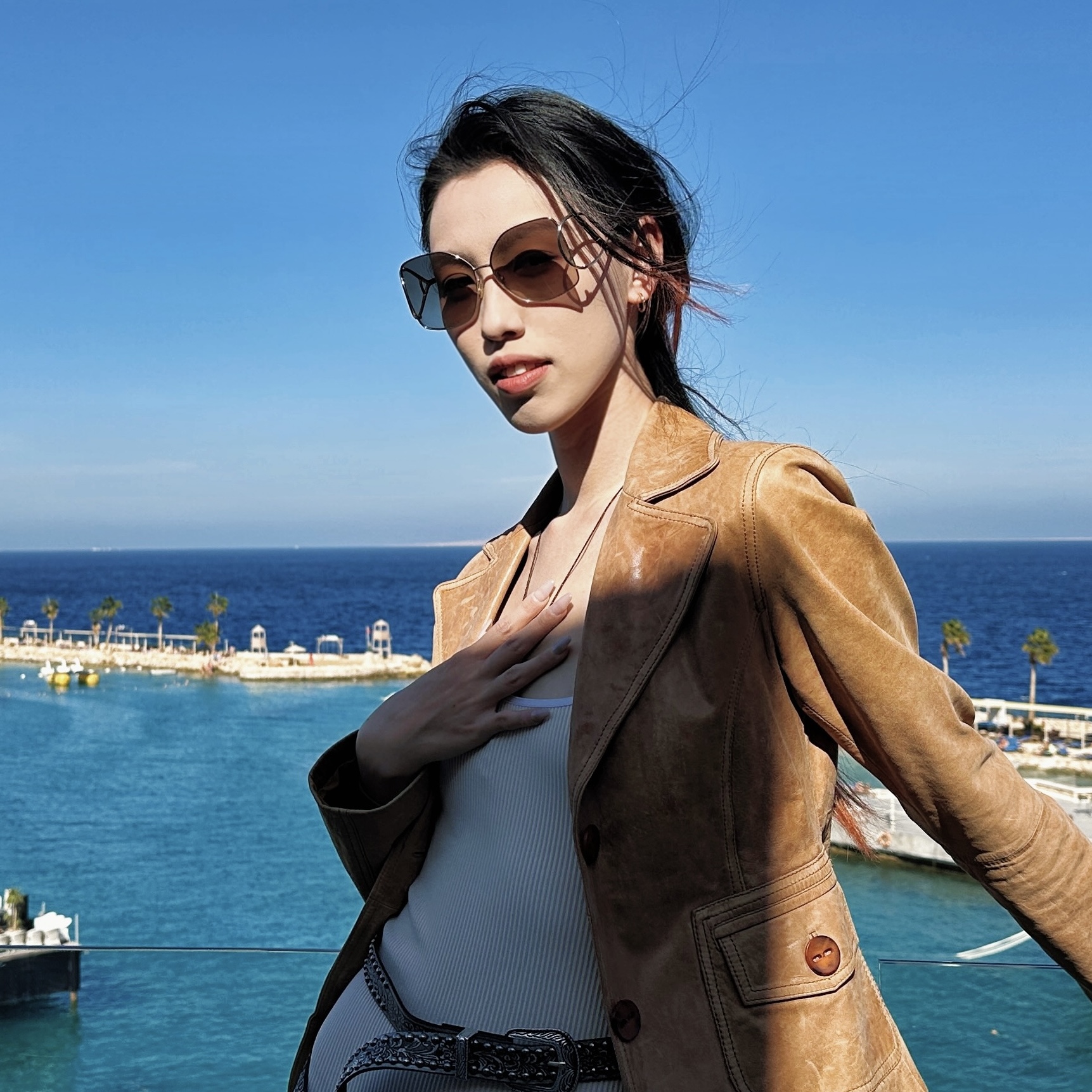Second Skin
Category: Apparel
Competitions: Fashion Competition 2025
Only Natural 2025 Fashion Apperal Project Title: Second Skin Project Introduction This project, titled Second Skin, explores how sustainable materials, ancient Chinese philosophies, and parametric natural patterns can be integrated into a wearable design that reflects both environmental awareness and cultural depth. Inspired by the concept of natural imperfection—specifically, the delicate cracks found in Chinese Ru kiln ceramics and dried earth surfaces—the design embodies resilience, adaptability, and beauty in fragility. The central idea is to reimagine traditional armor not as rigid protection but as a flexible, breathable second skin—one that responds to the body and environment like a living organism. Ancient Chinese lamellar armor was admired for its modular construction and adaptability. My reinterpretation merges this ancient principle with contemporary sustainability by using only natural and biodegradable materials such as wool and raffia. The development of this project began with an in-depth exploration of wool felting techniques. I worked extensively with wet felting, hand-layering raw wool fibres and using natural soap and water to bond them into thick, protective sheets. This process allowed me to create customizable shapes that molded naturally to the human form. However, the wet felting of large-scale panels came with many challenges, including inconsistent shrinkage and edge fraying. To resolve this, I experimented with internal binding using raffia weaving embedded along the wool edges. This method not only reinforced the structural integrity of the felt but also added a tactile, decorative detail rooted in craftsmanship. Raffia became a vital element throughout the entire development. After testing various types of raffia, I selected a higher-quality strand that remained intact and continuous, making it suitable for weaving and hand-stitching. The raffia was not only used for structural binding but also for creating handwoven decorative tassels at the back of the garment. Every binding, weave, and stitch was done entirely by hand, using only raffia as the connecting medium—no synthetic thread, glue, or plastic was involved. To explore the visual contrast between rigidity and softness—taking inspiration from the fractured surfaces of Ru kiln ceramics—I initially experimented with integrating recyclable aluminum sheets into the design. The aim was to create a subtle metallic crackled effect that echoed the layered fragility of ancient glazes. However, as I progressed, I realized that incorporating aluminum would complicate the garment’s biodegradability. In order to ensure that all elements could naturally decompose or be separated with ease at the end of the garment’s lifecycle, I decided not to use aluminum. Instead, I focused on achieving similar structural contrasts through the careful layering of natural fibres and surface techniques, maintaining both the visual intention and the integrity of a fully sustainable, compostable design. The design process involved multiple rounds of 3D draping and iterative prototyping on the mannequin. Since the raffia was difficult to pattern in a traditional flat format, I chose to construct key elements directly on the body form. This hands-on approach allowed better control over the flow, layering, and fit of the panels. Countless adjustments were made to balance the weight of wool felt with the lightness of raffia, while maintaining mobility and wearability. The final garment is composed of interlocking wool felt modules, each with reinforced raffia-bound edges, connected through handwoven joinery. The construction method is modular and zero-waste, with each felt piece made only to the necessary shape. All the components are biodegradable and ethically sourced. The wool was obtained from a local Scottish supplier, reflecting the project's grounding in both cultural heritage and material authenticity. This project is not just a garment—it is a physical manifesto of how tradition, sustainability, and experimentation can coexist in fashion. The armor-like exterior tells a story of protection, not from violence, but from environmental negligence. The softness of wool and natural fibers embodies care and responsibility toward nature. Every crack, seam, and fringe speaks to a world that is fragile yet powerful, broken yet repairable. By using only natural materials and working entirely by hand, I hope this design contributes to a growing movement that challenges the status quo of mass production and synthetic waste. It is a reminder that innovation can emerge from ancient wisdom, and that fashion can be both poetic and purposeful. Jennifer Jiang

